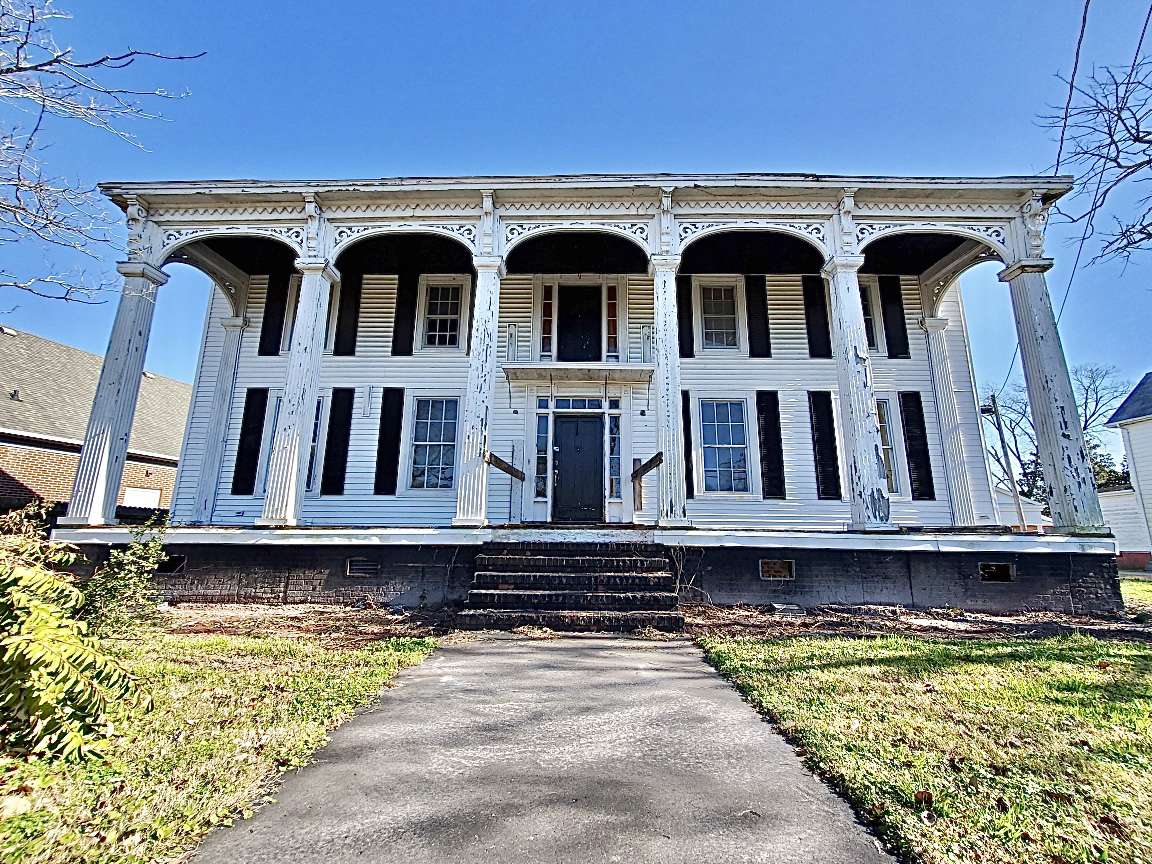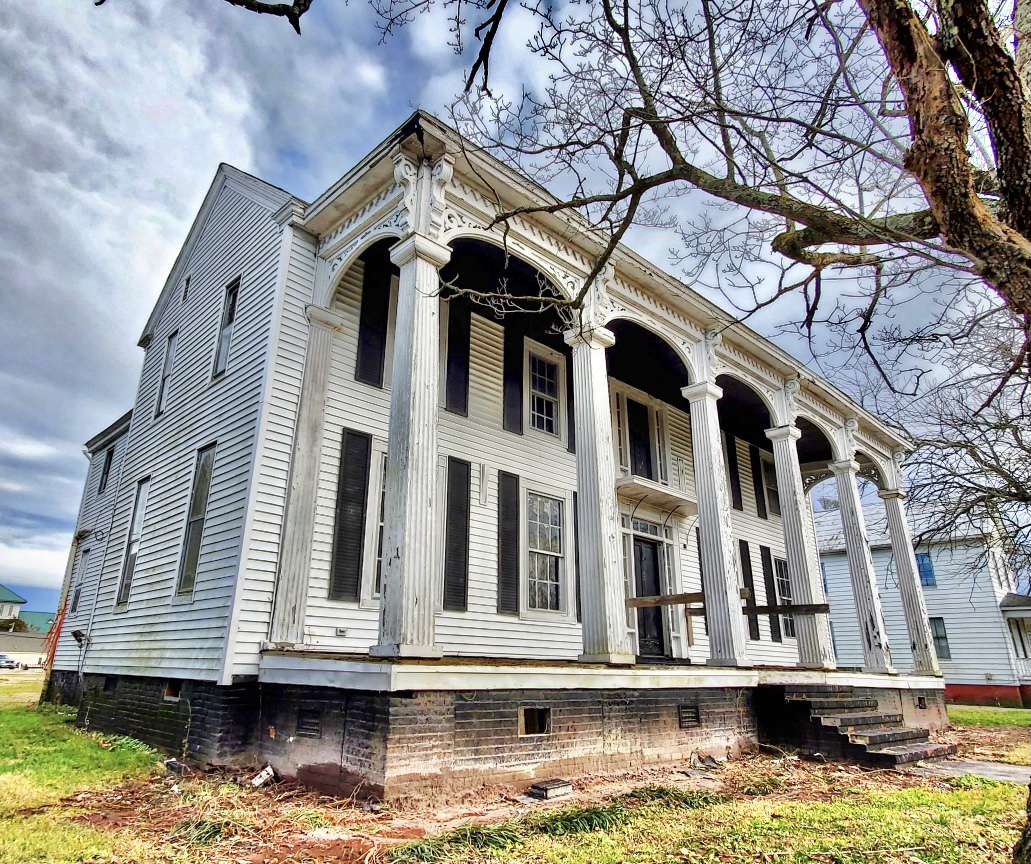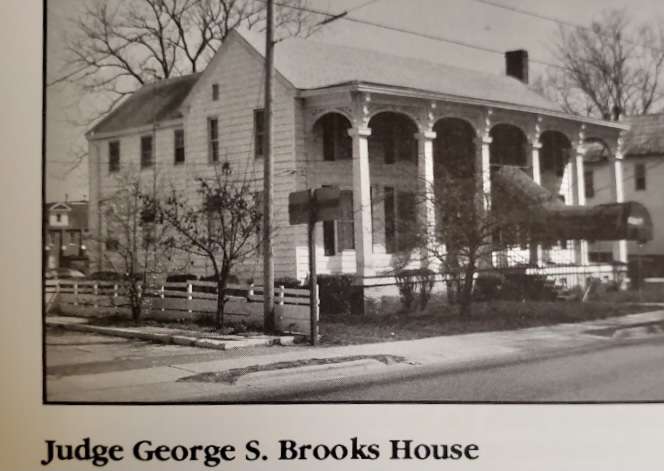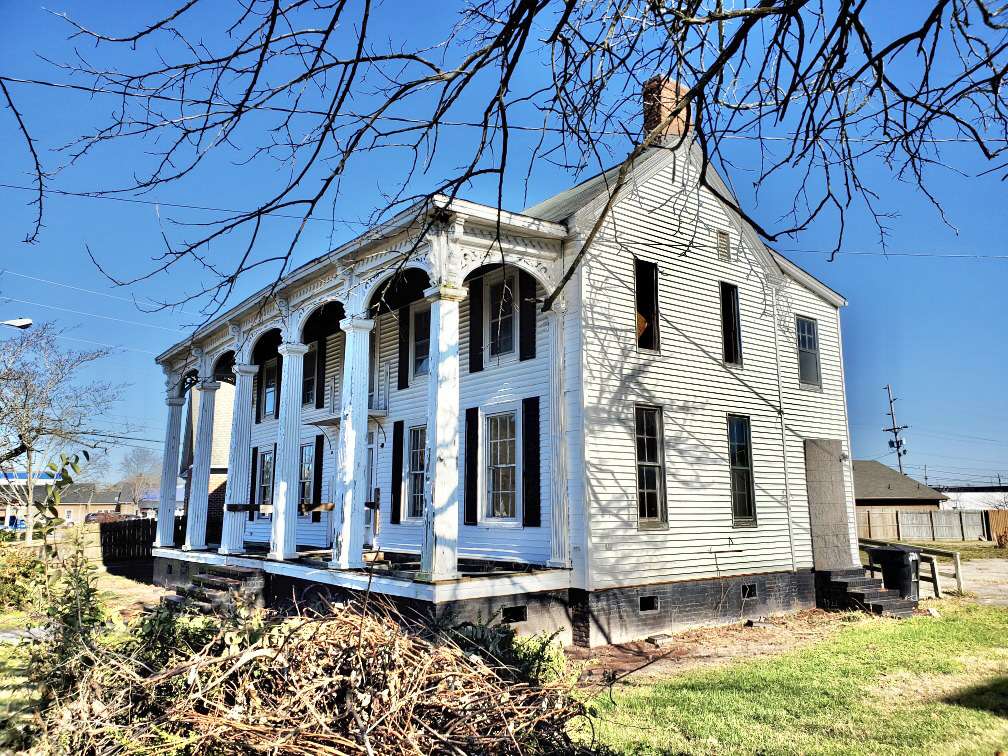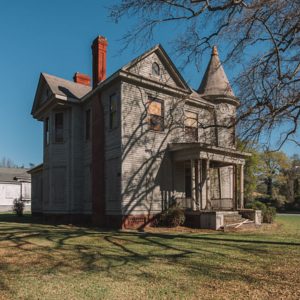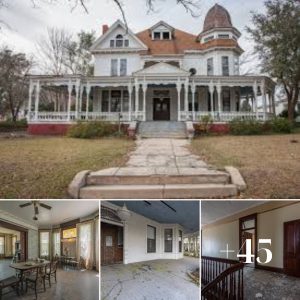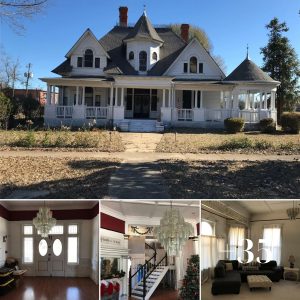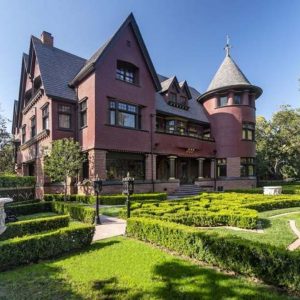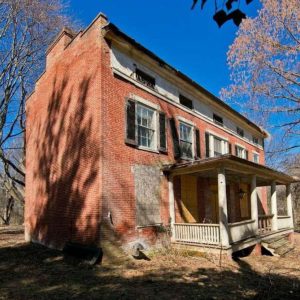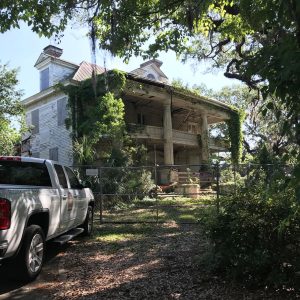The Judge George W. Brooks house is available for relocation! This architecturally and historically significant Greek Revival house is endangered by imminent demolition; however, it now has a brief reprieve while we work to find a preservation-minded person willing to save the historic house and relocate the structure to a new site.
Believed to have been constructed circa 1840 and originally consisting of a central hall with two principal rooms on each floor, this impressive house was expanded later in the 19th century to include a two-story el containing two additional rooms.
1840 Greek Revival in Elizabeth City, NC
Though walls and ceilings have sustained visible damage, this damage is largely immaterial as both drywall and plaster are typically removed prior to relocation.
Otherwise, the house remains substantially intact with many original details throughout, including casings inspired by the patterns of Asher Benjamin, Greek Revival mantels, an enclosed stair accentuated by an elegant arch with keystone, paneled window aprons, Greek Revival interior doors, wide-plank floors, and, most notably, an exuberant Greek Revival portico added by Brooks circa 1857 and featuring square tapered fluted columns and elaborate Italianate spandrels.
With such exemplary details, this house promises to restore beautifully. Judge George W. Brooks remains a noteworthy figure in North Carolina’s history, commemorated by both a historical marker placed near his former home and his portrait now featured in the collections of the nearby Museum of the Albemarle.
1840 Greek Revival in Elizabeth City, NC
The house is eligible for state and federal rehabilitation tax credits if it remains within the current neighborhood. It is also subject to a façade easement to be held by Preservation North Carolina.
1840 Greek Revival in Elizabeth City, NC
1840 Greek Revival in Elizabeth City, NC
1840 Greek Revival in Elizabeth City, NC
1840 Greek Revival in Elizabeth City, NC
1840 Greek Revival in Elizabeth City, NC
1840 Greek Revival in Elizabeth City, NC
1840 Greek Revival in Elizabeth City, NC
